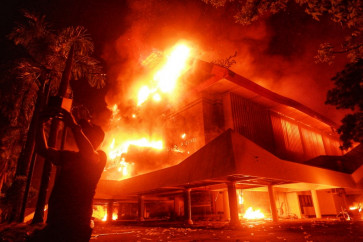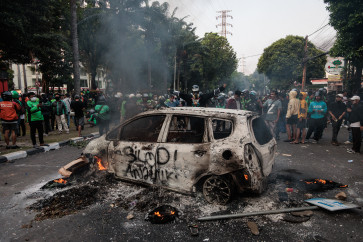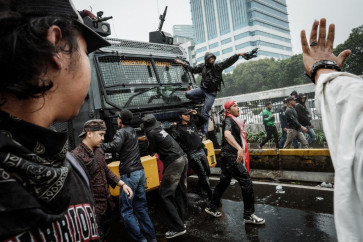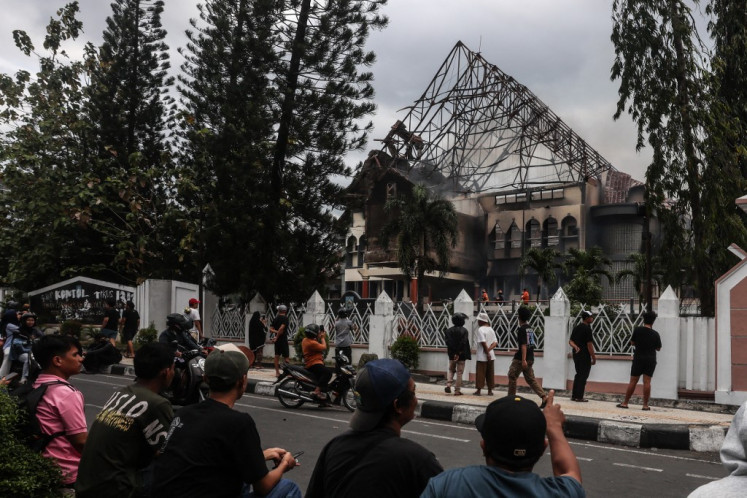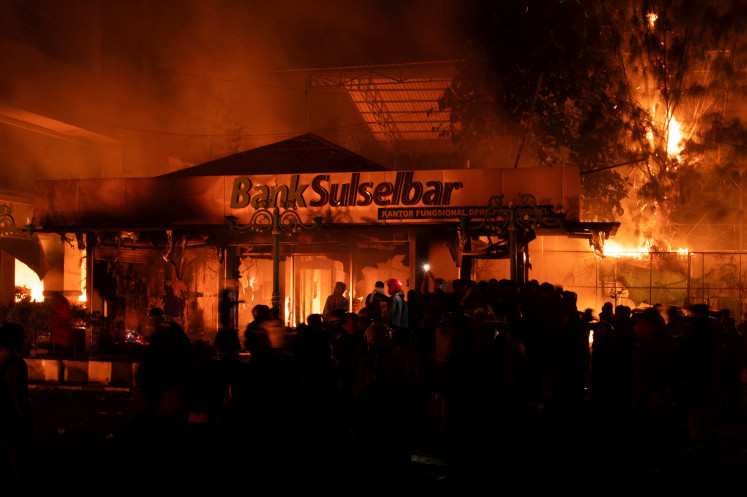Popular Reads
Top Results
Can't find what you're looking for?
View all search resultsPopular Reads
Top Results
Can't find what you're looking for?
View all search resultsLack of radar threatens security
Lack of radar makes sea and aerial territory in the country’s eastern part vulnerable to infiltration by foreign ships or planes, a military official says
Change text size
Gift Premium Articles
to Anyone
L
ack of radar makes sea and aerial territory in the country’s eastern part vulnerable to infiltration by foreign ships or planes, a military official says.
Maj. Gen. R. Liliek Kushadiyanto, an expert on national security and political affairs to the Indonesian military (TNI) commander, said the southern parts of Papua province, such as Merauke, were not yet covered by radar facilities.
”That’s how a plane can suddenly turn up from Australia due to the lack of radar,” Liliek said in a seminar on border security at Bandung Institute of Technology on Monday.
He said that ideally, Indonesia should be equipped with radar able to monitor up to a 1,000-kilometer radius, like the Australian ones.
“That’s why we are unaware if they infringe on our territory,” he said, without elaborating details.
In 2008, five Australians — two crew and three passengers — were detained after landing at Mopah Airport in Merauke without proper visas, flight approval or clearance. They were tried for violating Indonesian aviation and immigration laws. Merauke High Court cleared them of immigration offences.
Liliek said the presence of radar could help to monitor border security, especially given the limited number of marines posted in border areas and on outer islands.
TNI troops, he said, were on border security assignments on only a few islands, including Rondo, Berhala, Sekatung, Nipah, Miangas, Dana, Rote, Batek, Fani, Brass, Marampit and the Marore Islands.
“The rest of the TNI security posts are still not permanent,” Liliek said.
Other setbacks included the lack of a law regulating border security, which is crucial given the numerous border disputes between Indonesia and neighboring countries, such as Malaysia, East Timor and Papua New Guinea.
Another problem was the lack of wider focus of border posts, which he said was mostly based on the security angle rather than the well being of people living in border areas.
Liliek said TNI had set up 55 outposts, manned by 1,480 personnel along the border with Malaysia, spanning a border covering 2,400 kilometers, while TNI soldiers are only posted to 94 out of the 144 outposts sited along the border between Papua and Papua New Guinea.
“Borders areas are also prone to arms and fuel smuggling from neighboring countries to Indonesia,” he added.
Liliek said there were still at least ten disputed border areas in East and West Kalimantan, not yet resolved by Indonesia and Malaysia.
The chief executive of the Expedition to Indonesia’s 92 Outer Islands, Irwanto Iskandar, said that based on expedition findings so far, the most difficult problems faced by residents living on Indonesia’s outer islands were shortages of clean water, power and telecommunication.
According to him, 48 of the 92 islands are uninhabited and 13 others are inhabited on a seasonal basis.
“Most of them obtain potable water by retaining rainwater,” he added.


